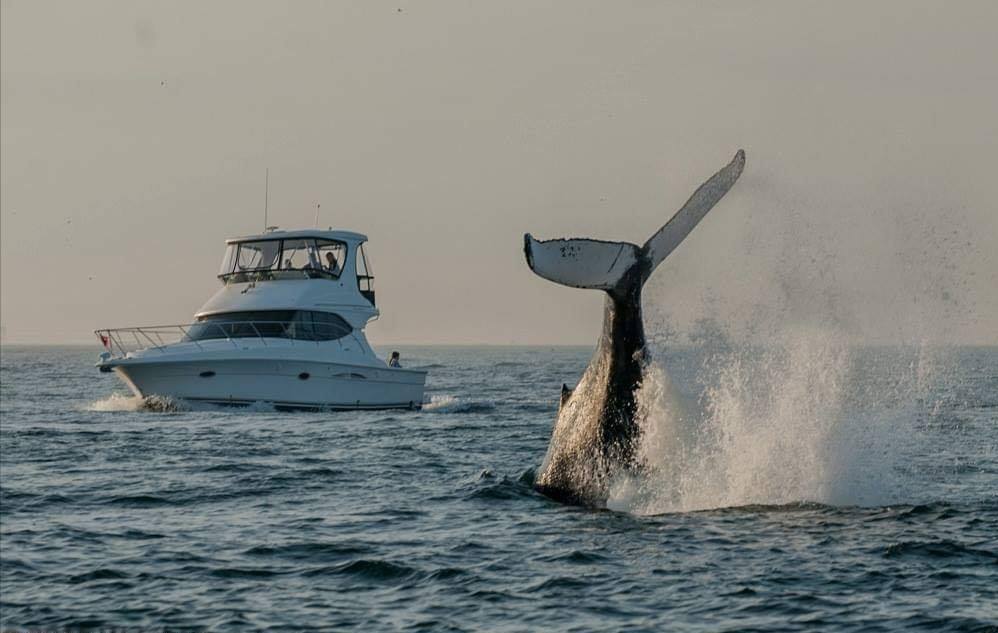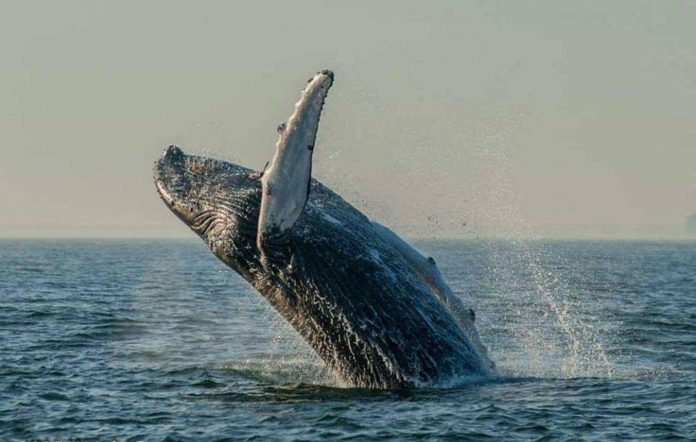In a total success story, the South Atlantic humpback whale has now reportedly come all the way back from the brink of extinction as the population has returned to numbers it had attained prior to a period of whale hunting in the early 1900s.
Back in the 1950s, there were only 450 humpback whales in the South Atlantic. You may think that’s a lot, but the population had numbered 27,000 prior to the start of the 20th century. And then humans began targeting them for their oil, and in just 12 years between 1904 and 1916, 25,000 humpback whales were killed. The killing continued until only 450 remained.
In 1966, the International Whaling Commission finally took action to protect the humpback whales by permanently banning commercial whaling, and conservation efforts began kicking into high gear as a global effort was made to help the whale population recover.
That is precisely what it has done ever since, and a new study estimates that the humpback whale population in the South Atlantic has climbed back to pre-20th-century numbers.
“Once protected, [western South Atlantic] humpback whales have recovered strongly, and their current abundance is close to 25,000 whales,” the authors wrote in a study published by The Royal Society.

In fact, the humpback whale population is recovering beyond past expectations.
“We were surprised to learn that the population was recovering more quickly than past studies had suggested,” University of Washington doctoral student and study co-author John Best said in a statement.
Alex Zerbini of the NOAA Alaska Fisheries Science Center’s Marine Mammal Laboratory agrees and pointed out that “wildlife populations can recover from exploitation if proper management is applied,” and the humpback whale recovery is a shining example of that management.
Humpbacks still threatened by humans
Of course, humpback whales are still threatened by humans today. Countries such as Japan still conduct whale hunts, and the whales are also vulnerable to boat strikes in commercial shipping lanes, plastic trash, and underwater sonar that produces noise pollution.
However, scientists are also concerned about how these whales will survive as climate change worsens, especially since their favorite food, krill, is threatened by warming seas.
“The recovery of humpback whales in the western South Atlantic has the potential to modify the structure of the ecosystem in their feeding habitats around South Georgia and the South Sandwich Islands,” Zerbini said. “For this reason, it is important to continue monitoring abundance and potential shifts in distribution to understand how krill and their predators, including whales, will respond to effects from climate change and whether these effects will impact their populations.”
And that’s why there are increasing calls for the United Kingdom to protect the waters around their feeding grounds so that humpback whales can complete their recovery and continue to survive far into the future.
“The progressive recovery of humpback whales in the sub-Antarctic region studied in this paper is a conservation achievement,” Bertarelli Foundation co-chair Dona Bertarelli said. “Full protection by the UK of the waters around the South Sandwich Islands is needed to help safeguard these whales’ food source, krill, and help ensure this population’s full recovery.”
See: First right whales of season spotted off coast of Beaufort










